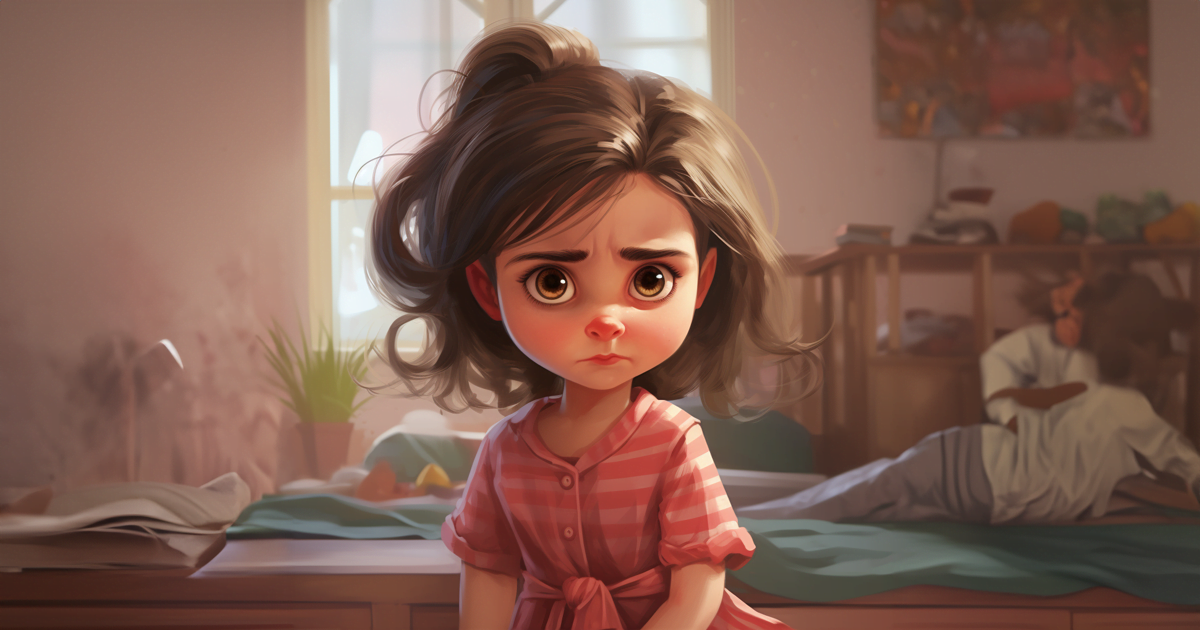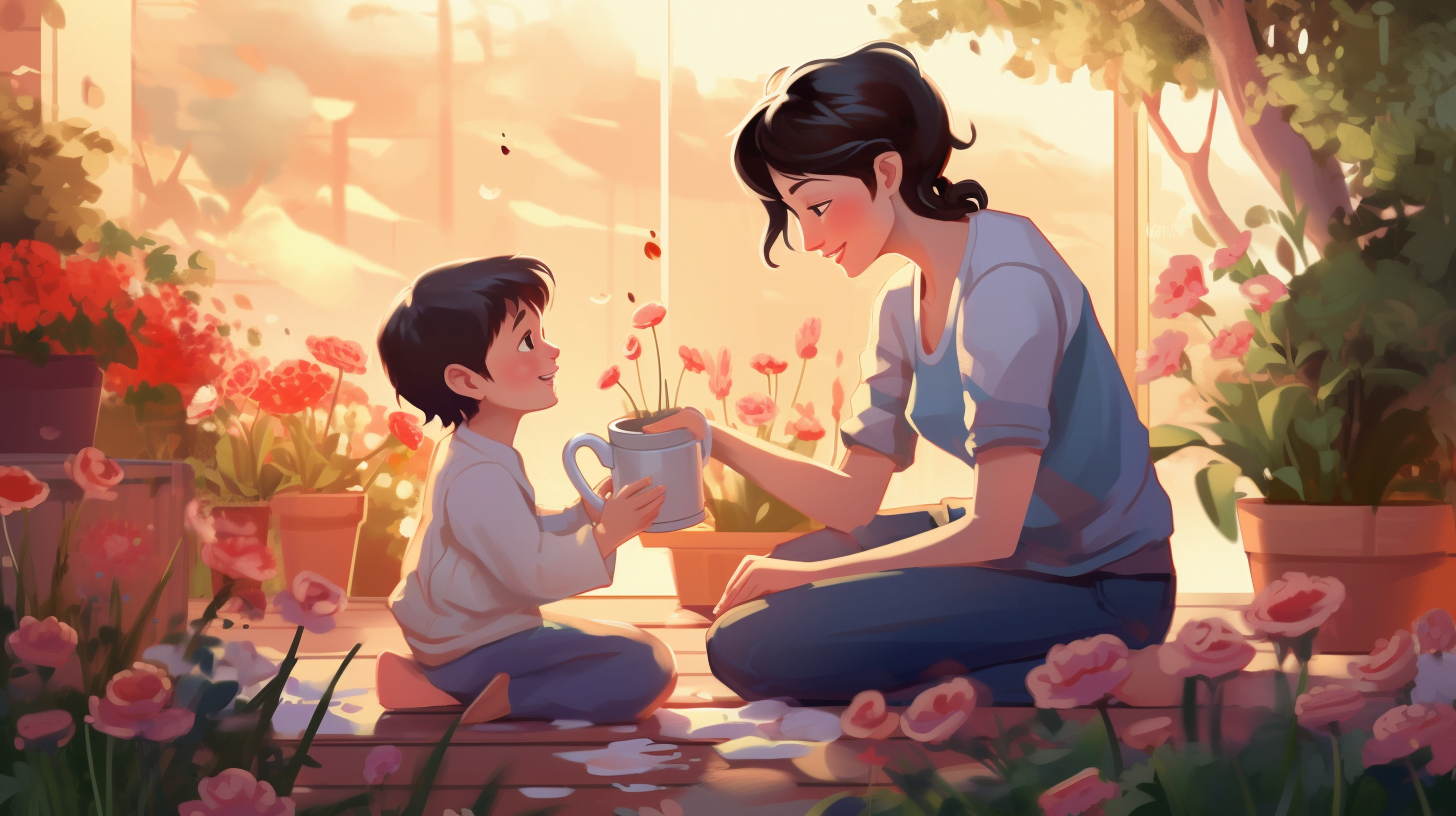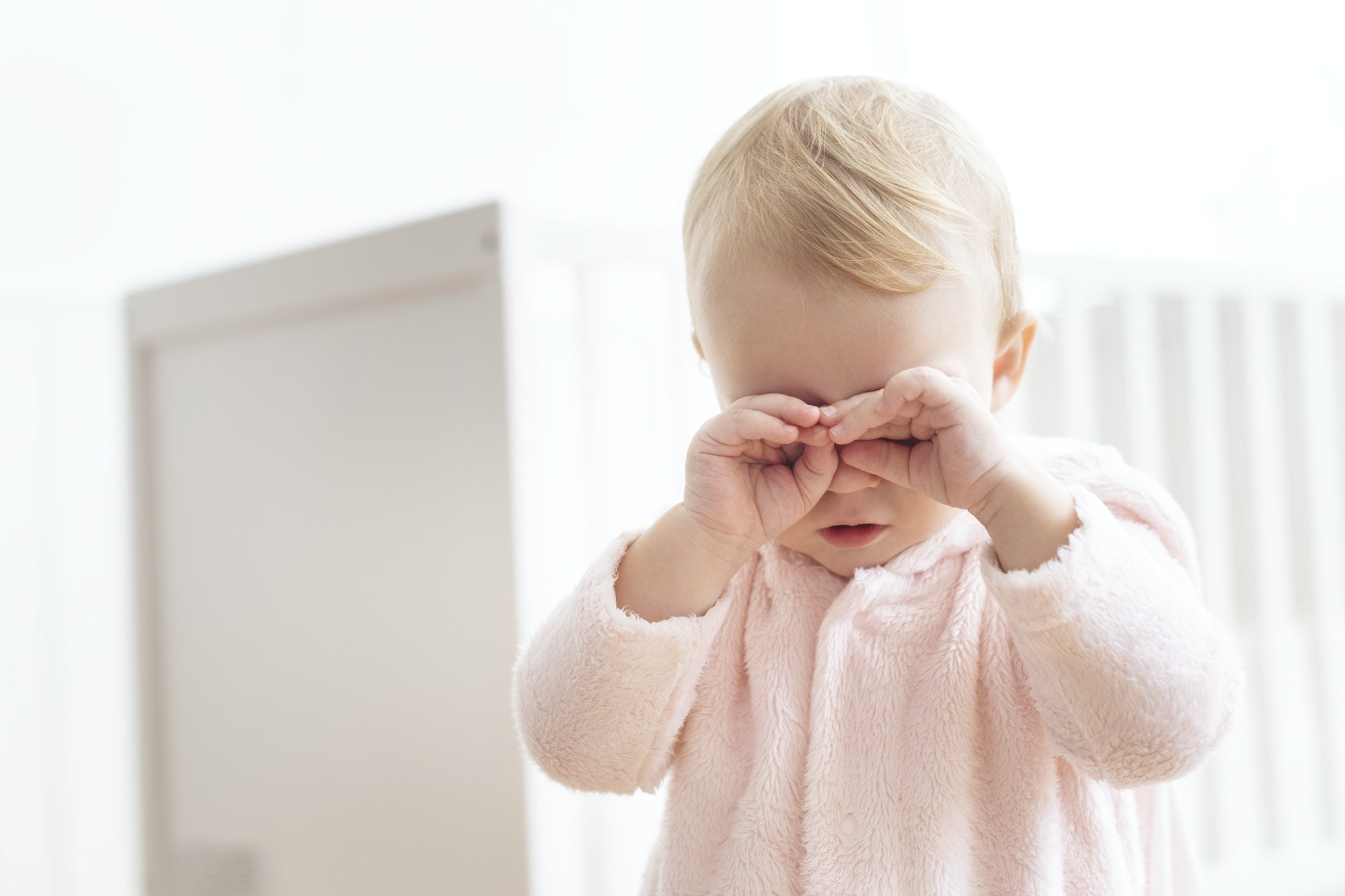Table of Contents
ToggleNavigating the world of parenting isn’t a walk in the park, and when your little one throws a tantrum, it can feel like you’re caught in the eye of a hurricane. But hey, before you pull your hair out or start speaking in tongues, remember that toddler tantrums are a common part of child development. Alright, tantrums can sure turn a simple grocery run into a full-blown circus act, but hey, with the right game plan in your back pocket, you can flip these kiddo meltdowns into learning experiences. Buckle up, buttercup! It’s parenting time.
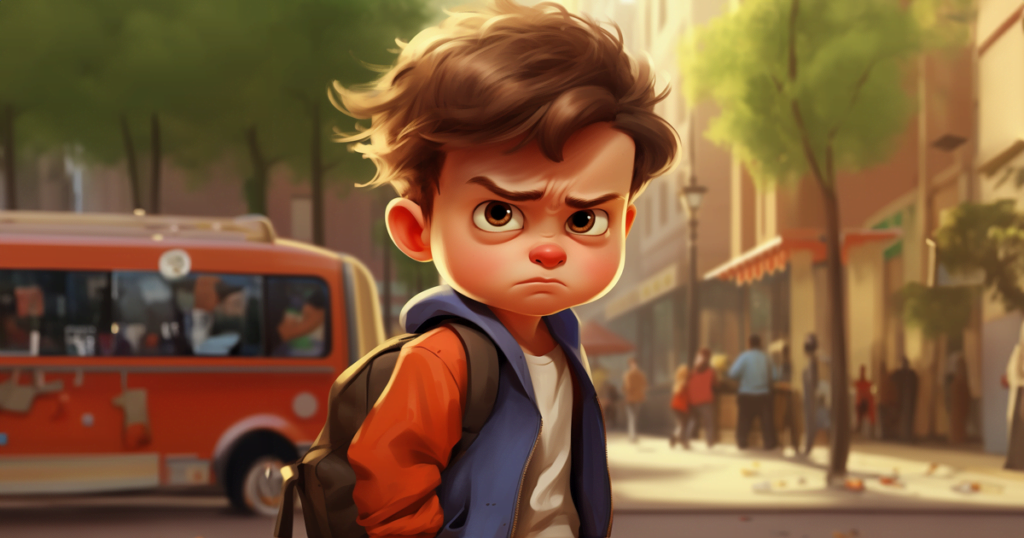
This comprehensive guide, designed for young moms, offers insights, strategies, and a whole lot of empathy for dealing with toddler tantrums, or as we like to call them – the “Terrible Twos Symphony.” Embrace the journey, momma. Remember, every little storm cloud has a silver lining. By understanding and managing those big feelings in your little one, you’re teaching them crucial emotional skills. So, buckle up, and let’s dive headfirst into the wild, unpredictable, yet wholly adorable world of toddler and baby tantrums. Together, we got this!
Understanding Your Toddler’s Tantrums
Alright, Super Mama, let’s switch gears from the chaos and dive deep into the why behind these toddler tantrums. Because let’s be real – figuring out the why can help us better handle the what. Alrighty, let’s roll up our sleeves, dive into the trenches, and unravel the enigma of these kiddo meltdowns. Buckle up, we’re going in!
Picture your tiny tot as an explorer in a vast, overwhelming world of emotions. They’re akin to a tourist in a foreign land, sans a guidebook or GPS. They’re experiencing some mighty feelings for the first time, and it’s kinda like trying to put together a 1,000-piece puzzle blindfolded – super overwhelming and darn near impossible.
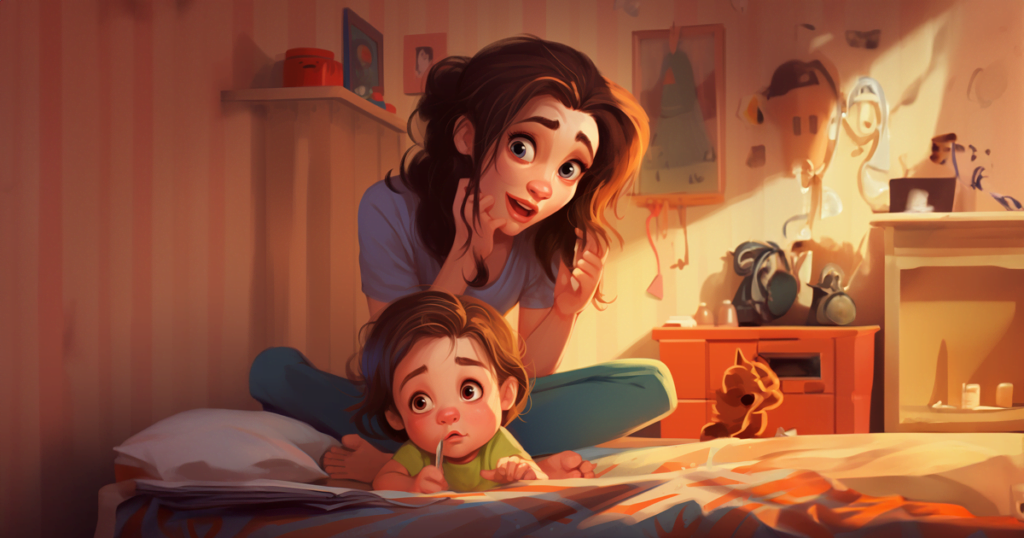
In their quest to navigate this intricate world of emotions, most toddlers hit some major roadblocks, or as we like to call them, tantrum triggers. These generally revolve around four primary needs – hunger, sleep, attention, or being overwhelmed by too much stimulation. Kind of like how we adults get grumpy when we’re hangry or bushed, right?
When your cutie-patootie can’t express what’s bothering them, the frustration builds up like a pressure cooker. And just like that pressure cooker, they need a vent, which unfortunately for us, often comes out as a full-scale tantrum.
But fret not, because understanding these triggers gives us the power to prevent, or at least manage, these toddler-sized storms. It’s like being given a secret decoder ring that helps us decipher their tantrum language.
Remember, it’s about being both sympathetic to their current distress and empathetic to their struggle of handling their big feelings. So let’s channel our inner toddler whisperers and ride this wave together, because honey, it’s all part of this crazy-beautiful journey called parenthood!
Signs and Triggers of a Toddler Tantrum
Alright, now that we’ve unpacked the “why” behind these little tyke’s tantrums, let’s gear up for the “when” and the “how.” Spotting the early warning signs of a tantrum is kinda like having your own kiddo’s emotional weather app. You can see the storm brewing and, with some luck and a dash of skill, even throw it off its track. Fasten your seatbelts, mama – it’s time to slip into our toddler-detective shoes!
Common signs of an incoming tantrum include changes in your kiddo’s behavior, like becoming unusually quiet, whiny, or clingy. You might also notice them getting frustrated over seemingly small things, like their blocks not stacking properly or their cookie breaking in half. If your tiny tot starts sporting a frown, doing the foot-stomp dance, or giving their tiny fists a good ol’ clench, brace yourself, ’cause you might be on the brink of Tantrumville.
As for triggers, remember the four horsemen we talked about earlier? Yup, hunger, tiredness, overstimulation, and the need for attention often play a major role here. Each kiddo is unique, so their triggers might be different or a mix of these. Keep an eye out for patterns – does your tot often throw a fit before mealtime or naptime? Do they tend to hit the meltdown button when there’s a whole lotta hoopla happening around them? Spotting these patterns is your secret weapon to predicting and managing these baby tantrums.
And remember, we’re dealing with little humans here. It’s okay to be both sympathetic to their struggles and empathetic to their needs. You’re doing an amazing job, Super Mama! Let’s keep this ball rolling and delve further into how to handle these tantrums when they strike!
It’s also important to remember that every child is unique and requires a tailored approach. This becomes even more critical when dealing with complex family dynamics, such as dealing with ungrateful stepchildren.
Tactics for Handling Toddler Tantrums
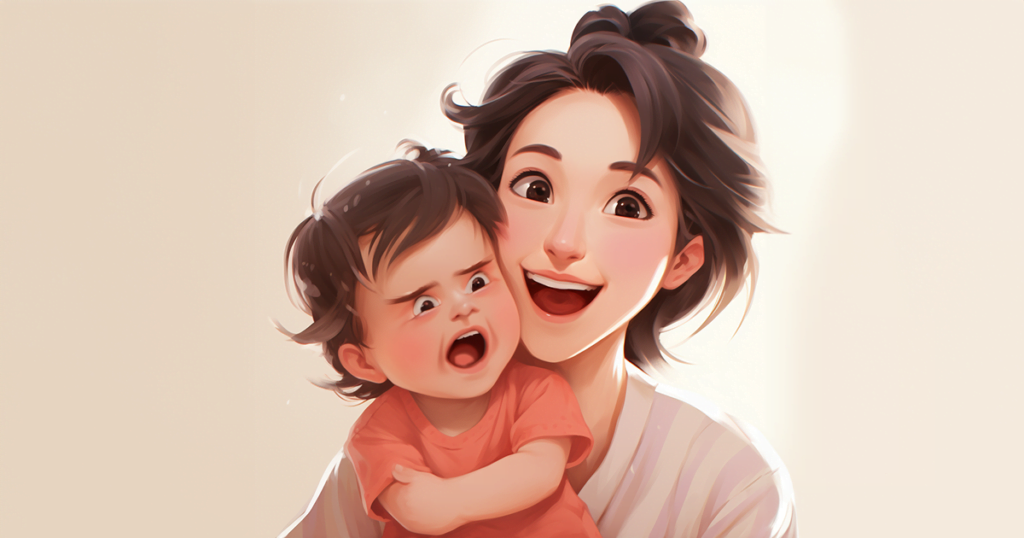
We’ve uncovered the why, the when, and the how of toddler tantrums. Now, it’s time to arm you with the best part: the what – as in, “What the heck do I do now?!” Hold on to your hat, Super Mama, as we plunge into the nitty-gritty of handling these emotional eruptions.
First off, let’s tackle the big kahuna: your own reaction. You might feel like losing your marbles when your kiddo kicks off, but keeping your cool is rule number one. Your little one’s looking to you for guidance on how to handle their big feelings, so leading by example is key. This approach doesn’t just require sympathy for their distress, but a healthy dose of empathy for their emotional struggle.
Now, onto some specific tactics. Distraction? Now, that’s a power player in your parenting playbook. Mid-meltdown, shift your tot’s focus to something else – maybe it’s a favorite toy, a goofy dance, or even a surprise visit from their beloved teddy bear. You’d be surprised how often a simple distraction can pull the plug on a tantrum.
Next, reinforce positive behavior. Remember little Sammy from our playgroup who would scream bloody murder every time he had to share his toys? His mom started a reward system, offering stickers for every successful sharing episode. Before we knew it, Sammy was sharing like a champ and his tantrums were history!
And remember, never undervalue the magic in a good, old-fashioned bear hug. Sometimes, all your toddler needs is to feel safe and loved. A hug or a cuddle can often do the trick. Just ask Jenny from down the block. Her son, Tommy, was a regular tantrum thrower until she started offering him a comforting cuddle during his meltdowns. It was like magic – Tommy felt heard and validated, and his tantrums were significantly reduced.
So, remember, keep your cool, distract, reinforce, and offer plenty of TLC. These tantrums might feel like tornadoes now, but armed with the right strategies, you’ll be navigating them like a pro in no time!
Staying Calm in the Eye of the Storm

Hey Super Mama, let’s chat about the secret sauce of handling tantrums: staying as cool as a cucumber when the toddler tornado hits. Yup, your emotions during these trying times play a massive role in both managing the tantrum and teaching your little one how to handle their own emotional storms.
When your tot’s wailing like a banshee and the judgmental glances are coming in hotter than a Texas summer, it’s tough to keep your cool. But remember, your kiddo is learning from you.If your kiddo catches you responding with a bit of a huff and puff or a frown, they might start thinking that’s the standard playbook for dealing with stress. On the other hand, if you navigate their tantrum waters with chill vibes and a heap of understanding, you’re schooling them on the fact that it’s alright to have all these big feelings, and, more importantly, how to deal with them in a cool, collected way.
Think about Sammy’s mom from our earlier example. Her calm response to Sammy’s tantrum made a world of difference in managing the situation and reinforcing positive behavior.
So, the next time your little one’s in meltdown mode, take a deep breath, count to ten, or use whatever trick helps you keep your zen. This way, you’ll not only handle the situation better, but also model calm behavior for your mini-me to emulate. As the saying goes, be the serene lighthouse in your toddler’s stormy emotional seas, and they’ll learn to navigate their way back to calmness, too!
Distraction and Diversion Tactics
Now, let’s add another powerful weapon to your tantrum-tackling arsenal: the art of distraction and diversion. Think of it as your secret magic trick to turn your little one’s attention from meltdown mode to mesmerized.
The power of distraction lies in its simplicity. Just as a magician uses misdirection to pull off a jaw-dropping trick, you’re diverting your tot’s attention from their frustration to something more pleasant and engaging. This tactic is not about ignoring their feelings, but rather about helping them shift focus until they’re calm enough to talk about their emotions.
So, how do you whip up a miracle, you wonder? Well, each kiddo is different, so the key lies in finding what captivates your little one. Remember our goofy dance diversion during Sammy’s meltdown? It could be as straightforward as that, no kiddin’. Or perhaps it’s a favorite toy, a silly song, or a sudden pretend game where you both become explorers in the jungle!
For Tommy’s mom, it was a surprise cuddle from his beloved teddy bear that would bring his tantrums to a grinding halt. The possibilities are endless – you just need to be a tad creative and super observant of what makes your toddler tick.
So, next time the tantrum clouds gather, don’t forget your magic trick – distraction! With this tool in your super mama belt, you’re well on your way to effectively dealing with those toddler tantrums.
The Power of Positive Reinforcement
Okay, Super Mama, let’s change up the game with our next tactic: positive reinforcement. This strategy’s as golden as the ticket in Charlie’s chocolate bar and works wonders on encouraging good behavior.
Positive reinforcement is all about highlighting and rewarding the positive stuff your toddler does. When you demonstrate that playing nice leads to good vibes, they’ll be more inclined to hit the replay button on that behavior. Think of it as sweetening the deal for being on their best behavior.
Take Sammy’s sharing saga as an example. Remember how his mom used stickers as a reward for every successful sharing session? That’s positive reinforcement in action! The trick is to be consistent and immediate with the reward, so your tot connects the dots between their positive behavior and the good outcome.
Also, it’s important to ensure the reward is something they truly value, whether it’s a sticker, an extra story at bedtime, or a dance party with Mommy. This strategy is a double win – it discourages tantrums and promotes good behavior!
So, alongside distraction and staying calm, don’t forget to sprinkle in some positive reinforcement. With these three superpowers combined, you’re well on your way to becoming the master of the toddler tantrum universe!
Post-Tantrum: Recovery and Reconnection
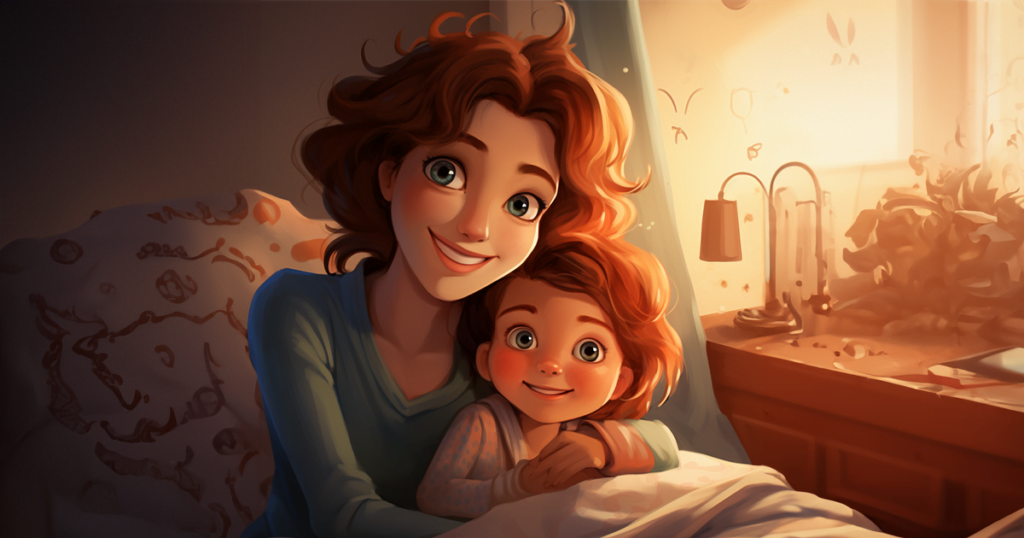
Okay, Super Mama, you’ve navigated the tumultuous tantrum waters like a champ. The storm has passed, and your little tot is back to their charming self. So, what’s next? Now, let’s zero in on the post-meltdown stage – a crucial piece of the tantrum puzzle that often gets left in the dust.
First off, acknowledge their emotions. Just like us, toddlers need to know that it’s okay to have big feelings. Your compassionate reaction could be as easy as saying, “I get it, you were bummed because sharing your toy wasn’t on your agenda.” This way, they’ll realize that even though having a fit isn’t the best way to show their feelings, it’s totally cool to have emotions and rap about them.
Next, reconnect. Now, this doesn’t mean throwing a party because the tantrum’s over. It’s about re-establishing your bond after the emotional upset. This could be a warm hug, a favorite quiet time story, or a heart-to-heart chat. Keep in mind, your goal here is to set up a comfy zone for your kiddo to come back to after their emotional rollercoaster ride.
Think about Tommy from our earlier examples – his mom always made sure to give him a comforting cuddle after each tantrum. That kind of reassurance strengthens the parent-child bond and reinforces trust.
So, there you have it, Super Mama. Tantrums are tough, but with a firm grasp of the before, during, and after, and with your empathetic and sympathetic approach, you’re more than equipped to handle them. Here’s to smoother seas ahead!
When to Seek Professional Help

Alright, Super Mama, we’ve covered a ton about tackling toddler tantrums. But sometimes, despite your best efforts, tantrums might become more than just a standard part of toddlerhood. It’s crucial to recognize when it’s time to call in the cavalry and get some professional assistance.
If your little one’s tantrums start to hit more often, come on stronger, or stick around longer than what’s typical for their age group, or if they’re getting into the realm of self-harm or hurting others in these meltdowns, it might be high time to get your kiddo’s doc on the horn. These could be signs of a more serious issue, like a language delay, hearing problems, or even an emotional disorder.
Remember Sammy’s and Tommy’s moms from our earlier stories? They always kept a close eye on their kiddos’ antics and didn’t think twice about ringing up a professional if they thought it was called for. Don’t feel like you’re making a mountain out of a molehill – it’s always a smart play to play it safe when it’s about your little one’s health and happiness.
In the home stretch, don’t forget that each tyke is their own unique self, and you’re absolutely crushing this wild and crazy journey we call being a parent. Whether it’s handling the tantrums on your own or seeking professional advice, you’ve got this, Super Mama!
FAQs About Toddler Tantrums
Before we wrap things up, Super Mama, let’s address some of the most frequently asked questions on the tip of every young mom’s tongue when it comes to handling toddler and baby tantrums.
Why does my toddler have tantrums?
Toddler tantrums are a normal part of child development. Your kiddo is just trying to figure out their place in this big, wild world. So when things don’t roll their way, they might throw a fit. It could be anything from a growling tummy, needing a snooze, feeling all twisted up inside, or just hankering for a bit of your undivided attention.
Are tantrums a sign of bad parenting?
Absolutely not! Remember, tantrums are a standard part of toddlerhood and are no reflection on your parenting skills. You’re killing it, mama! Just remember, during these rough patches, hang on to your patience, keep your empathy game strong, and stay steady. You got this!
When should I worry about my toddler’s tantrums?
While tantrums are typically a normal part of development, if they’re particularly frequent, intense, or if your tot is harming themselves or others, it may be time to discuss this with a professional, like your pediatrician.
How can I prevent toddler tantrums?
While it’s impossible to prevent all tantrums, understanding your toddler’s triggers can certainly help. Sticking to a routine, ensuring they’re not overly tired or hungry, and practicing positive reinforcement for good behavior can all help reduce tantrum frequency.
What’s the game plan when my kiddo kicks off a tantrum?
Staying calm is key. Try to validate their feelings, distract, divert, or ignore the behavior where appropriate. And remember, don’t forget to reconnect once the storm has passed.
Keep in mind, Wonder Mom, tantrums can feel like a wild rodeo, but with a dose of patience, understanding, and a couple of ace cards in your back pocket, you’ve totally got this.
Conclusion
Well, there we have it, Super Mama! We’ve cruised through the chaotic world of toddler and baby tantrums together. We’ve understood the psychology behind them, identified common triggers, and developed a toolkit to handle these tantrums like a pro. From staying calm, employing distraction tactics, reinforcing good behavior, and seeking professional help when needed, we’ve covered the whole nine yards.
The most important takeaway? You’re in good company on this wild ride, and tantrums, even though they can give you a few more gray hairs, are just part and parcel of your kiddo’s growing-up process. So, chin up! With your empathetic, patient, and consistent approach, you’re sailing through these stormy seas like the Super Mama you are.
If you’re curious about more on the ups and downs of raising little humans, you might find our article on parenting challenges in modern parenthood insightful.
Remember Sammy’s and Tommy’s moms from our stories? They had their helping of days chock-full of tantrums, but they navigated them with a kind heart and a cool head, understanding that it’s all just part of this wild kiddo journey. And guess what? So are you.
With every tantrum, your bond with your tot only strengthens, and trust us, this phase won’t last forever. We hope this guide has given you a few tricks to tuck up your sleeve and a fresh perspective on toddler tantrums.
Have a toddler tantrum story you’d like to share? Any unique strategies you’ve discovered? We’d love to hear from you! After all, we’re all in this together, navigating the wild seas of parenting, one tantrum at a time. Keep rocking it, Super Mama! You’ve got this.

